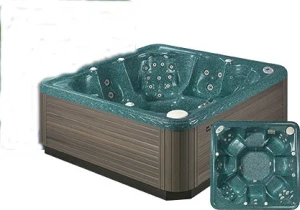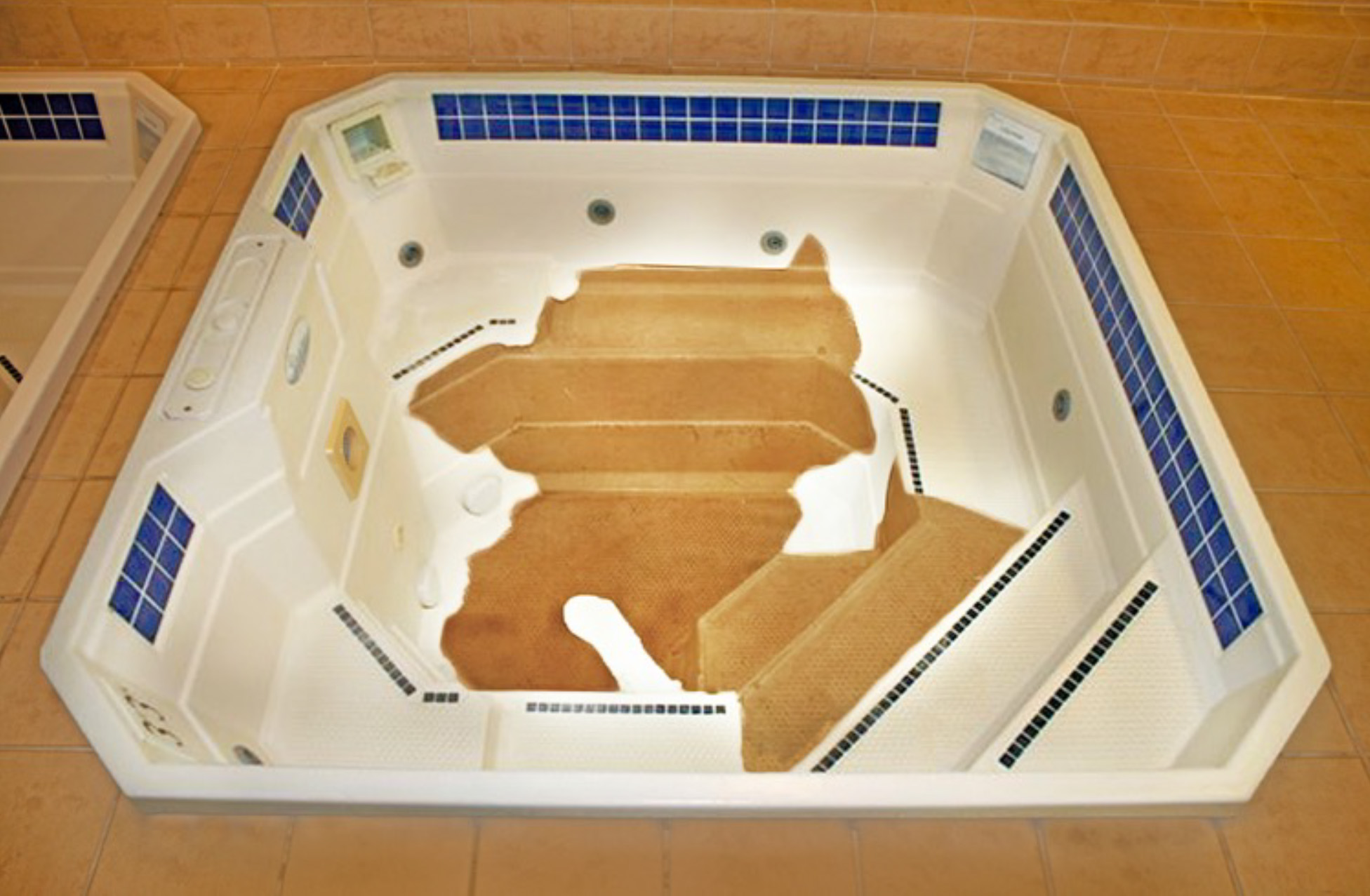Acrylic spas, renowned for their durability and aesthetic appeal, sometimes face the challenge of localized discoloration. This issue often manifests as a bleached surface, occasionally accompanied by tiny blisters, raising concerns among spa owners and dealers alike. Through thorough investigation and expertise, it has been identified that the root cause of such discoloration is invariably the localized exposure to strong sanitizing chemicals.
Acrylic spas are crafted from cross-linked, high molecular weight acrylic polymer sheets, which boast significant chemical resistance. However, the introduction of certain sanitizing agents, especially when not in accordance with manufacturers’ guidelines, can compromise this resistance. The use of sanitizers, essential for maintaining water chemistry, must be carefully managed to prevent damage to the spa’s surface.
One of the most prevalent causes of acrylic spa discoloration is the misuse of Tri-Chlor tablets. These chlorine-based sanitizing agents, while effective in pools, can have detrimental effects on acrylic spas. When these tablets come into direct contact with the spa surface or remain in close proximity for extended periods, they can bleach acrylic pigments, leading to noticeable discoloration and blistering.
To mitigate the risk of chemical damage, it is imperative to follow the spa manufacturer’s recommendations for chemical use. Liquid sanitizers are preferred for their ease of concentration control, ensuring that chemicals are quickly dissolved and evenly dispersed throughout the spa. This prevents the formation of localized regions of high chemical concentration, which are the primary cause of surface discoloration.
In instances where chemical damage has occurred, there is a path to restoration. The affected area can be sanded down to remove the oxidized layer, revealing the undamaged acrylic beneath. This process, while effective, requires careful attention to prevent further damage to the spa surface. Sanding should progress from coarse to fine grits, culminating in buffing and polishing to restore the original gloss.
In severe cases of chemical attack, where widespread discoloration has compromised the spa’s aesthetic, sanding, buffing, and polishing may not suffice to restore the original appearance. Such scenarios underscore the importance of chemical management and the need for professional evaluation to determine the most appropriate repair or restoration approach.
The integrity of acrylic spas can be preserved through diligent chemical management and adherence to manufacturer guidelines. For spa dealers and technicians, understanding the causes of surface discoloration and mastering the techniques for repair are essential for maintaining the beauty and functionality of these luxurious amenities. Multi-Tech Products stands ready to support professionals with the knowledge, materials, and guidance needed to tackle chemical damage, ensuring that acrylic spas continue to provide a safe and enjoyable experience for users.



Find all the essential information about Multi-Tech Products, from contact details to terms of service, in our comprehensive footer section. We’re here to help you with all your surface repair needs.

Your order has been confirmed & it is on the way. Check your email for the details